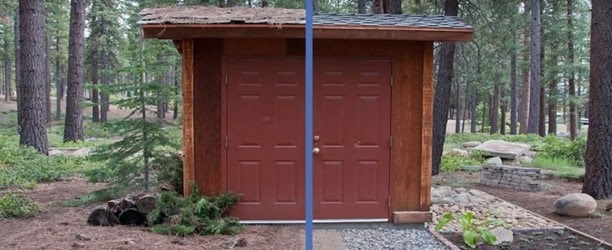Defensible Space
The Fire District offers online scheduling for defensible space inspections (DSI). Please review below before scheduling online:
WASHOE COUNTY PERMITS
A defensible space inspection is typically required for all projects requiring a Washoe County Permit, such as Short-Term Rentals (STRs) or Building Permits.
SCHEDULE A WASHOE COUNTY RELATED DSI HERE
OTHER DSI REQUESTS
A defensible space inspection may also be solicited or requested for other reasons, such as from recieving a notice from the Fire District, insurance purposes, or at the request from a homeowner.
For questions or follow-up regarding defensible space or fuels management, please contact Fuels Mitigation Specialist Ryan Dominguez at 775-833-8130 or
------------------
What is Defensible Space?
Defensible space is the area between a house and an oncoming wildfire where vegetation has been modified to reduce the wildfire threat. Defensible space is simply a homeowner’s properly maintained backyard. Use the information below as a guide. For more advice on defensible space, visit Living with Fire in the Lake Tahoe Basin or refer to the Lake Tahoe Fire Adapted Communities booklet.
Refer to the Defensible Space check list for more detailed information that will be covered during the evaluation. Another important component to creating effective defensible space is to ensure the built environment, as well as the non-combustible area of your home, is free of fire hazards. Please refer to the Home Vulnerability checklist that may be included if needed, during the defensible space evaluation. For more information on home hardening please refer to the Wildfire Home Retrofit Guide.
If you need to authorize a representative on your behalf, please complete the Authorization for Representation by Agent form.
Steps to having a Defensible Space
Step 1- Know Your Distance
The recommended distance of defensible space is different for all homes. The types of vegetation and terrain are key factors when deciding how far out to extend the Defensible Space Zone. Most properties need 100-200 feet of defensible space.
Step 2- Remove the Dead
Within the Defensible Space Zone, remove all dead vegetation including dying trees, shrubs, grass, weeds, fallen branches, thick accumulations of needles and leaves, etc. Remove fallen needles and leaves within 30 feet from the house every spring, and don’t allow a depth of more than 3 inches of depth beyond 30 feet from the house.
Step 3- Create Separation
Areas of dense vegetation pose significant wildfire threats. Thin dense tree and shrub stands to allow for more separation between continuous fuels.
Step 4- Remove Ladder Fuels
Vegetation allowing fire to climb up from the forest floor to the canopy, are known as ladder fuels. Smaller vegetation such as shrubs and young trees should be cleared away from beneath larger trees.
Step 5- Lean, Clean, and Green
Within 30 feet of your home, remove fuels that ignite easily such as dead shrubs and trees, dried grass, pine needles, firewood, etc. Create a 5-foot non-combustible zone around the perimeter of your home, and keep your landscaping well-maintained.
